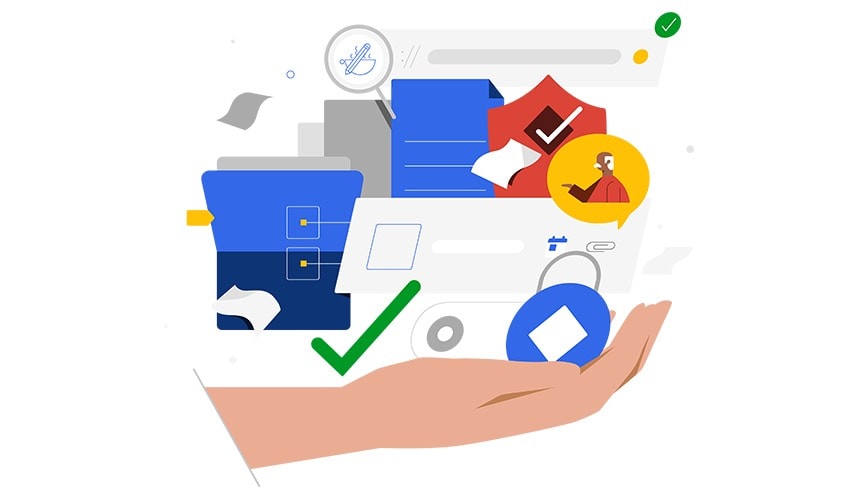A domain, like a diamond, is valuable. It’s your unique address, the key to your content, and the online identity of your company.
Perhaps you use your website to sell concert tickets, host online conferences or display your newest product.
No matter what business you run, if your domain suddenly stops working, you could lose money quickly, damage your brand’s reputation, or worse.
Table of Contents
Why is domain security important?
Cybercrime is becoming more and more common. In fact, it’s projected that global cybercrime costs will reach $10.5 trillion per year by 2025. This is because hackers and criminals are always updating their methods to take advantage of new technologies.
That’s why it’s so important to make sure your domain security is strong.
There are a number of threats to online security, including phishing attacks and pharming attacks. Phishing attacks occur when you receive an email from a hacker who is pretending to be your registrar.
They will try to get you to click on a link that will take you to a page where you are asked to enter personal information. Pharming attacks, also known as domain hijacking, occur when your website traffic is redirected to another site in order to steal your sensitive data.
Why is your domain name valuable?

If a website is unprotected, there are many ways that it can be harmed.
For example, hackers could take control of the site and change the information, or people could send emails with viruses to your customers.
Another danger is that someone could get into your site’s files and steal customers’ personal information. If this happens, the customers might not come back, and they might tell other people not to use your website either. Finally, if someone gets into your website without permission and does something bad, you might be sued.
DNS changes (nameservers or host records) – instead of landing on your website as planned, your consumer can get an error page or harmful information.
Your consumers will instead see an error page if you erase your domain name. You will have to pay money to get a deleted domain back.
The performance of your website won’t be impacted by changing your Whois contact information, but it could be the first step in someone stealing your domain.
It will be more challenging to demonstrate that you are the true owner if someone else’s contact information is posted for your domain; also, it may indicate that someone is trying to transfer your domain.
When a domain is transferred away, in addition to your website not loading, you also lose control of your domain, making it impossible for you to make any configuration changes. To regain your domain, you may need to submit a dispute, which could take some time and cost a lot of money in legal expenses.
Accidental domain expiration – Your website won’t load, and reactivating the name will be expensive, whether it happened because of a payment dispute or because the auto-renewal feature was turned off.
If you don’t employ domain privacy, hackers could impersonate you using the Whois-listed information about you. They may attempt to steal your domain or use it for harmful purposes. Additionally, without domain privacy, marketers can freely contact you using your personal information, such as your phone number and email address.
Ways To Secure Domain
Two-Factor Authentication
Two-factor authentication (2FA) is a way to help keep your account safe. With 2FA, you need two things to prove that you are who you say you are before you can access your account. These two factors may be a mobile app, SMS verification, or a physical authentication key.
Limiting IP address access
You can protect your domain name by only giving account access to specific IP addresses. This will allow you to mark certain locations as safe, such as your home or work IP addresses. If any unauthorized IP addresses try to access your account, they will not be allowed in.
Registry lock
A registry lock is a paid service that prevents domain name deletion, nameserver changes, and transfers to other registrars. Your registrar account won’t allow you to do this; you’ll need to do it directly in the registry. It’s an essential security measure to have if your domain is particularly precious, as it will prevent any unauthorized changes to its most crucial settings.
In our survey, 40.8% of respondents said they used registry locks on all of their domains, 10.9% said they used them on some domains, and 8.8% said they never used them. The remaining respondents claimed ignorance of the concept of a locked registry.
Web threat lists
If your domain name is listed as potentially harmful, a warning message will appear when a user attempts to access your site, potentially discouraging your users from clicking through. It is worthwhile to keep an eye on web threat lists to ensure that your domain name is not incorrectly labeled as dangerous.
Conclusion
If your domain name is listed as potentially harmful, a warning message will appear when a user attempts to access your site, potentially discouraging your users from clicking through.
It is worthwhile to keep an eye on web threat lists to ensure that your domain name is not incorrectly labeled as dangerous.


![How To Manage Client Communication Effectively 2024? [5 Key Tips]](https://megablogging.org/wp-content/uploads/2022/11/Client-Communication-Management-211x150.png)
![How to Create a Lead Capture Landing Page in WordPress 2024? [Step-By-Step Guide]](https://megablogging.org/wp-content/uploads/2022/11/How-to-Create-a-Lead-Capture-Landing-Page-in-WordPress-211x150.png)
